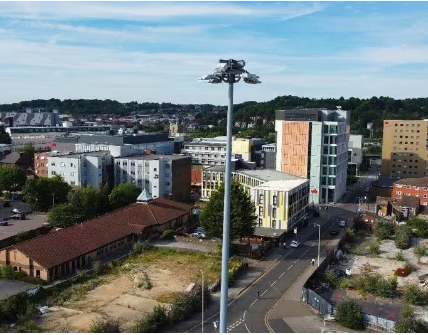State pensioners are in line for up to £575 extra per year but will have no tax to pay to HMRC – yet.

The DWP is set to hand out another £575 a year (Image: Getty)
New state pensioners are in line for a huge boost to their annual benefit income – but will avoid a tax bill from HMRC for at least one more year.
New state pensioners are in line for a boost to their state pension worth nearly £575 year. That’s because the Triple Lock forecasts show that right now, the benefit is set to increase by 4.8% next year.
The new state pension was introduced in 2016 and applies to all men born after April 5, 1951 and women born after April 5, 1953. Everyone who gets the full new State Pension will be handed another £575 a year thanks to the Triple Lock, according to the latest figures.
The DWP has to increase the amount paid to those who receive the state pension each year thanks to the ‘Triple Lock’ system, which enshrines in law that everyone who is eligible for the handout from the Department of Work and Pensions must see an increase each year, either level with inflation, wage growth or by 2.5%, whichever is highest.
Consumer Price Index figures for May to July, the three-month period used to determine the wage growth element of the Triple Lock, dictate that it would be a handy 4.8% increase for pensioners per year.
Right now, the full state pension is set at £11,973 per year, so a 4.8% increase would add £575 per year to pensions, taking the weekly payments from their current £230.25 per week to about £241 per week, or £12,548 per year in total.
Martin Lewis explained via his MSE website: “The State Pension is set to rise 4.7% [now 4.8%] next April. We know this as it is ‘triple locked’ – i.e. it rises by the higher of 2.5% or inflation or the rise in average earnings. The key figure has just come in for earnings to July and it’s likely to be the highest of the three, at 4.7% [now 4.8%].
“So based on that, the FULL State Pension (for someone with all the qualifying National Insurance years) is set to rise from: NEW state pension: £230.25 to £241.05 a week [now £241.30]. OLD state pension (retirees pre-April 2016): £176.45 to £184.75 a week [now £184.90].
“This will take someone on the full new State Pension to £12,535 a year [now £12,548], only £35 [now £22] below the frozen personal allowance (amount you can earn tax-free each year).
“So as State Pension income is taxable, that means without any question the following year (unless something changes), those on the full new State Pension with no other income will for the first time pay tax on it (as it will rise a minimum 2.5% and personal allowances are frozen).”
The reason the amount falls just below the £12,570 Income Tax threshold is because HMRC calculates the pension income as 51 weeks at the new rate, and one week at the old rate.
HMRC told MSE: “We calculate how much State Pension an individual accrues each year by calculating one week at the old rate of State Pension and 51 weeks at the new rate.”
MSE adds: “Presuming the 4.8% increase goes ahead as expected, this would result in an annual taxable amount of £12,536.55 for 2026/27 – meaning those who only get the full new State Pension (and have no other income) WON’T pay income tax on it next year.”
However, this will change in 2027 when the next Triple Lock rise adds more to pension incomes and pushes new state pensioners over the threshold.

